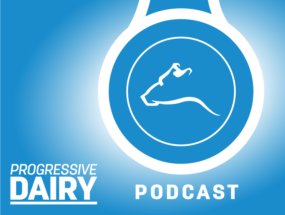Producers and consumers alike are wondering what is really going on in the supply chain.
Steve Van Lannen, president and chief operating officer of American Foods Group, gave perspective on how the commodity markets are acting and reacting, and provided a glimpse of the future in a University of Wisconsin – Madison webinar held April 29.
Supply-demand shifts
American Foods Group handles both cow and bull slaughter and graded cattle at their Green Bay, Wisconsin, headquarters. According to Van Lannen, the first ripple of COVID-19 impacts felt at their plants came in early March, as food service “closed overnight” with the stay-home orders. Prior to that, Americans had been eating 50% of their meals away from home. Restaurant closures forced consumers to head to the grocery store, but retailers were not ready for that surge. As panic buying left some meat cases empty, the boxed beef that would have gone to restaurants started coming into the secondary markets.
While early April saw a leveling of supply and demand, Van Lannen said packers made drastic changes to what they were saving. End cuts were going into the grinder to keep up with ground beef supply and maintain lean-to-fat ratios.
Labor issues
“Then we started to see plants go down,” Van Lannen said. With employees out, some plants adjusted down from two shifts to one daily shift and in the meantime, enacted employee health precautions including personal protective equipment and social distancing within the plant.
“Our plant in Green Bay is operating at 60 percent of capacity,” he said, noting he expects to maintain that level for the foreseeable future. The down capacity is a result of employees having tested positive or on quarantine because they have been exposed to an infected person.
However, American Foods Group continues to run at “good capacity” at their other plants and have shifted cow slaughter to locations in Minnesota, South Dakota and Nebraska.
No fat to be found
While production levels have been impacted by labor, there’s another major factor at play. With large fed cattle plants closed or operating at reduced capacity, Van Lannen said the fat trim needed to make the ground beef blends of 70%-80% lean are hard to come by right now.
“There’s just no fat trim available,” he said. According to Van Lannen, correcting this shortage will require more larger fed cattle plants to come back online.
Carbon dioxide
Yet another factor influencing meat packers is cost and availability of carbon dioxide (CO2).
Packers use large amounts of this gas for operations such as chilling product. Van Lannen said this is a “major impactor” on their plants. While they are still able to purchase CO2, it is coming from farther away and now with a hefty surcharge, as ethanol plants also reduce capacity.
Livestock marketing: ‘Slow down, but don’t stop’
Curt Larson, president and CEO of Equity Cooperative Livestock Sales Association, urged cattle producers and dairy farmers to taper down the number of cattle they are sending to market at the same time in order to maximize cattle value. The cooperative includes 11 auction markets in Wisconsin and one in Iowa.
“Slow down, but don’t stop,” he said. While no one can predict processing capacity or consumer demand in the coming weeks, producers can spread their risk by following these three strategies:
1. Market in smaller groups – Send fewer head at one time for a better chance to capture highs and minimize losses during lows.
2. Market different days – The situation at the packing plants may change in just a matter of days.
3. Market at multiple locations – Different locations may have buyers looking for certain types of cattle.
Larson urged producers to consider working with a marketing agency to leverage different packer plant programs and help determine where livestock will bring the most value.
While serving producers and moving cattle is a top priority, so is minimizing the risk of disease transmission. “It’s all about safety and trying to limit that exposure, but yet continue to do business,” he said.
Their barns are no longer open to spectators, and buyer attendance is limited. Producers no longer leave the site with checks in hand. To avoid person-to-person contact, they are asked to drop livestock off, leave the facility and then arrange to pick up checks at a later date.
While most of these locations remain open, they chose to suspend or adjust times on some activities to minimize disease transmission risk. The Marion, Wisconsin, sale barn held auctions on Monday evenings, brought in trucks that had already stopped at several locations and would then head back out on the road the next morning. With other markets not far away, Larson said they felt they could continue to serve their customers with cattle marketing needs.
“We know there’s a lot of people out there that need to eat; there’s a lot of livestock that need to be processed, and we know the processors are working hard to keep some amount of capacity open, so it’s important we keep moving livestock through the chain wherever we can.”
Larson and Van Lannen were featured on the “Grain, beef and cow markets” webinar hosted by the University of Wisconsin – Madison Extension. Watch the webinar on YouTube. ![]()
PHOTO: Photo by Cassidy Woolsey.

-
Peggy Coffeen
- Editor
- Progressive Dairy
- Email Peggy Coffeen







